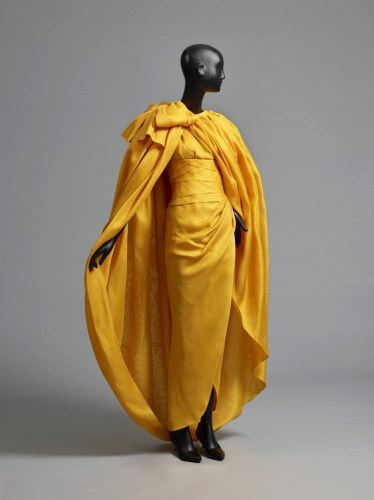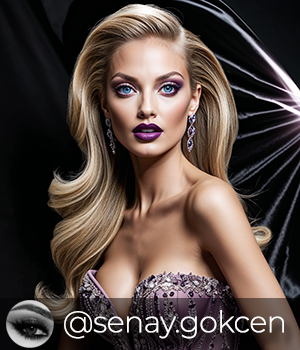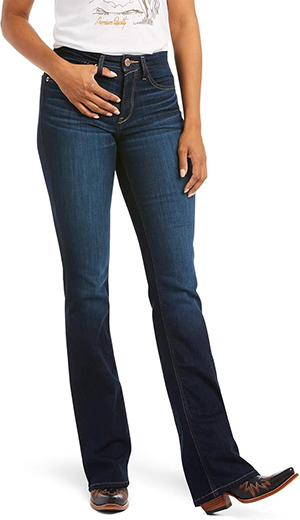October 16, 2018 – March 3, 2019
Over seven decades of style will be displayed in Fabulous Fashion: From Dior’s New Look to Now, a major exhibition highlighting creativity and glamour
The haute couture and ready-to-wear garments and accessories on view range in date from 1947 – the year of the introduction of Christian Dior’s revolutionary “New Look” – to recent ensembles by audacious designer Bernhard Willhelm. Featuring some of the most significant and visually compelling works from the Museum’s renowned collection of costumes and textiles, Fabulous Fashion presents many new acquisitions and other outstanding works, exhibited rarely if ever before.

Dress, 1994, Designed by Pierre Cardin. Copyright Archives Pierre Cardin. Image courtesy of Philadelphia Museum of Art.
Timothy Rub, The George D. Widener Director and Chief Executive Officer, said: “Few museums have such extraordinary range and depth in their collection of costumes and textiles as the Philadelphia Museum of Art. As we continue to work on our Facilities Master Plan, which will result in much more gallery space to display the richness of our holdings in this field, Fabulous Fashion will serve as a reminder of the strength of our collection and all that we have to offer to those who value the extraordinary history of costumes and textiles as much as we do.”

Woman’s “Mercury” Evening Dress, Designed by Geoffrey Beene. Lamé velvet of metallic pile and acrylic twill ground. Gift of Geoffrey Beene, 1997. Image courtesy of Philadelphia Museum of Art.
Fabulous Fashion includes such iconic works as Adrian’s 1947 velvet “winged victory” gown, an understated black and white 1972 Chanel suit, and Geoffrey Beene’s 1994 silver lamé “Mercury” dress. Radical design is exemplified by Paco Rabanne’s dress made of plastic discs linked by metal rings (from his 1966 collection entitled “Twelve Unwearable Dresses in Contemporary Materials”) and a punk-inspired ensemble by Zandra Rhodes from her 1977-78 “Conceptual Chic” collection.

Woman’s Evening Dress, 1947, Silk velvet, Designed by Adrian. Center Front Length: 48 inches (121.9 cm) Center Back Length: 66 inches (167.6 cm) Waist: 25 inches (63.5 cm) Length (Center front waist to floor): 40 1/2 inches (102.9 cm) Length (Center back waist to hem): 50 1/8 inches (127.3 cm). Gift of Mrs. Walter H. Mock, Jr. Image courtesy of Philadelphia Museum of Art.
Focusing on fashion as an art form, the exhibition is arranged thematically to explore designers’ creative use of color and pattern, shape and volume, draping, metallics, bridal traditions and innovations, and exquisite embellishments. Works will be grouped together to offer striking visual comparisons and demonstrate the relentlessly creative spirit of fashion.

Woman’s Evening Dress and Cape, Summer 1983, designed by Marc Bohan for Christian Dior. Bright yellow silk gazar. Length (Dress): 57 inches, Waist (Dress): 24 1/2 inches, Length (Cape): 64 1/2 inches. Philadelphia Museum of Art: 125th Anniversary Acquisition. Gift of Kathleen P. Field, 2014. Image courtesy of Philadelphia Museum of Art.
A pair of ensembles from fifty years apart opens the exhibition, each embodying fashion-forward dressing for its time. Dior’s two-piece pale pink satin day dress from 1948, with a nipped-in waist and full skirt that epitomizes the ultra-feminine “New Look,” contrasts with a flirtatious hot pink fur-collared wool suit designed in 1998 by John Galliano for the house of Dior.

Woman’s Evening Ensemble: Dress, Overdress, Bustle, and Petticoat, Spring 1951, Designed by Cristóbal Balenciaga. Waist: 24 inches (61 cm) Black silk organza, white cotton piqué, black silk. Image courtesy of Philadelphia Museum of Art.
A dramatic section of the exhibition features magnificent ballgowns and other evening wear to illustrate the inspired use of shape and volume. This features masterworks by Pierre Cardin, whose extraordinary sculptural designs from the 1980s and early 1990s reflect his background in architecture, as well as dresses with voluminously ruffled skirts by Jean Dessès (1957), Roberto Capucci (1985), and Oscar de la Renta (2007). Two flamenco-inspired dresses – one designed by Cristóbal Balenciaga in 1951 and the other by Patrick Kelly in 1988 – reflect how each designer’s unique heritage informed the reinterpretation of a traditional form.

Woman’s Evening Dress and Flower Pin, Fall 2006, Designed by Oscar de la Renta. Worn by Mrs. Martin Field. Light brown nylon tulle and silk gauze, burgundy synthetic velvet. Gift of Martin Field. Light brown tulle and gauze strapeless dress with train, burgundy velvet artifical flower brooch. Image courtesy of Philadelphia Museum of Art.
Stimulating juxtapositions are presented throughout the installation. Gold embroidered net, for example, is used by Anne Fogarty in a strapless evening dress – designed to flaunt an 18 ½ inch waist – that reflects the 1950s ideal of femininity (articulated in the designer’s 1956 book, Wife Dressing: The Fine Art of Being a Well-Dressed Wife). In contrast, a gold lamé mini dress from the late 1980s by Vicky Tiel exudes glamour, sensuality, and strength.

Woman’s “Flying Saucer” Dress. Designed by Issey Miyake. Spring/Summer 1994. Made in Japan. Heat-set polyester plain weave. Height (Pink Band): 7 1/2 inches (19.1 cm). Gift of Issey Miyake, 1997. Image courtesy of Philadelphia Museum of Art.
Color is the focus of both Issey Miyake’s “Flying Saucer” dress of 1994 and a shift designed by artist Ellsworth Kelly in 1952 that was reinterpreted sixty years later by Francesco Costa of Calvin Klein, while the use of flamboyant prints can be seen in a dress and tights by Emilio Puccio (1965) and Christian Lacroix’s catsuit (1990), among others. Ingenious examples of drapery include a classic goddess gown by Madame Grès (1981) and a deconstructed dress designed a decade later by Rei Kawakubo for Comme des Garçons. Inventive embellishments emphasize the skill and creativity involved in techniques such as beading, embroidery, and appliqué. Meticulous feather work, for example, adds not only brilliant color but also texture and movement to cocktail dresses by Nina Ricci (1968) and Peter Som for Bill Blass (2008).

Woman’s Two-Piece Dress: Top and Skirt, Spring/Summer 1988, Designed by Christian Lacroix. Pink, red and green printed white cotton brocade; white cotton and acrylic ribbon; pink, red and green synthetic plain weave. 125th Anniversary Acquisition. Gift of Kathleen P. Field. Pink, red, green and white cotton brocade strapless bustier top, sweetheart neckline and peplum at waist, pink and red fabric roses in a heart shape at bust. Matching short tulip-shape pleated skirt. Image courtesy of Philadelphia Museum of Art.
A selection of bridal gowns that combine tradition and innovation includes Pierre Balmain’s luxurious 1959 creation of ivory chiffon with silk and silver damask, Vera Wang’s 1999 custom-made satin gown with an opulent embroidered bodice, and Carolina Herrera’s 2012 strapless design with a bustled back skirt unexpectedly striped in gold, silver, and grey. Grace Kelly’s wedding headpiece and shoes, as well as her bridal manual, all covered with lace and accented with seed pearls, are also featured in this section.
Kristina Haugland, the Le Vine Associate Curator of Costume and Textiles and Supervising Curator for the Study Room, who organized Fabulous Fashion, said: “With so many wonderful examples in the Museum’s collection, the works on view have been selected to complement one another and encourage visitors to make connections between different eras, approaches, and aesthetics.”
Curator
Kristina Haugland, The Le Vine Associate Curator of Costume and Textiles and Supervising Curator for the Study Room.
Location
Dorrance Special Exhibition Galleries, first floor.
Support
This exhibition has been made possible by The Annenberg Foundation Fund for Major Exhibitions, The Kathleen C. and John J.F. Sherrerd Fund for Exhibitions, The Women’s Committee of the Philadelphia Museum of Art, The Jill and Sheldon Bonovitz Exhibition Fund, Barbara B. and Theodore R. Aronson, the Davenport Family Foundation, Lyn M. Ross, and an anonymous donor.
Costumes and Textiles at the Philadelphia Museum of Art
Since its founding, as a result of Philadelphia’s 1876 Centennial Exhibition, the Philadelphia Museum of Art’s costume and textile collection has become one of the largest and most comprehensive in the world. Numbering some 30,000 objects, the collection is remarkable in depth and breadth, encompassing art of great quality from diverse eras and around the globe. Textiles holdings range from Middle Eastern and Asian archeological examples to American quilts and samplers to fiber art, while the extensive collection of garments and accessories includes particular strengths in late-nineteenth century French couture and the iconic designs of famed twentieth-century designer Elsa Schiaparelli, as well as a growing collection of contemporary menswear. The 1956 wedding dress worn by Princess Grace of Monaco, the former Grace Kelly of Philadelphia, is another highlight (currently not on view). Since costume and textile objects can only be displayed for short periods of time due to light sensitivity and other conservation concerns, the Museum showcases diverse aspects of its encyclopedic collection through special exhibitions and rotating displays.
Philadelphia Museum of Art
www.philamuseum.org
2600 Benjamin Franklin Parkway,
Philadelphia, PA 19130
215-763-8100
Tuesday–Sunday, 10:00 a.m.–5:00 p.m.
Wednesday & Friday: Main building open until 8:45 p.m.
Closed Monday
All images courtesy of Philadelphia Museum of Art
Tags: 1940s, 1950s, 1960s, 1970s, 1980s, 1990s, Accessories, Christian Dior, Christian Lacroix, costumes, Costumes and Textiles at the Philadelphia Museum of Art, Cristóbal Balenciaga, Dior, dresses, evening gowns, evening wear, exhibitions, Fabulous Fashion, fashion, fashion and lifestyle, fashion designers, fashion icons, garments, Haute Couture, Issey Miyake, Kristina Haugland, Philadelphia Museum of Art, philamuseum, Pierre Cardin, ready-to-wear, style, textile design, The Annenberg Foundation Fund

 Share On Facebook
Share On Facebook Tweet It
Tweet It



























